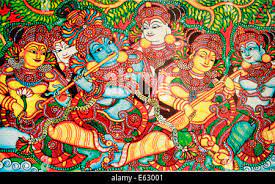
Janmashtami: Delving into the Significance and Celebration of Lord Krishna's Birth
Janmashtami, also known as Gokulashtami or Krishna Janmashtami, is a vibrant and joyous Hindu festival that commemorates the birth of Lord Krishna, the eighth incarnation of Lord Vishnu. Observed with great enthusiasm and devotion by millions across the world, this festival not only celebrates the divine advent of Krishna but also imparts profound spiritual teachings through various rituals and customs. Let's dive into the significance of Janmashtami and explore the rich tapestry of traditions that surround this auspicious occasion.
The Divine Birth of Krishna

The story of Krishna's birth is steeped in both mystery and divine intervention. Born in a prison cell in Mathura to Devaki and Vasudeva, his birth marks the end of tyranny and the beginning of hope. Guided by divine signs, Vasudeva transports the infant Krishna across the Yamuna River to Gokul, where he is nurtured by Yashoda and Nanda. This divine exchange symbolizes the cosmic play of good over evil and underscores Krishna's mission to protect dharma (righteousness) and foster love.
Spiritual Significance

Janmashtami holds deep spiritual significance, serving as a reminder of the eternal principles taught by Lord Krishna in the Bhagavad Gita. The Gita's teachings on duty, righteousness, and devotion resonate with devotees during this time, encouraging them to live a life guided by virtue and selfless action. The festival inspires individuals to contemplate the path of devotion and the pursuit of truth.
Rituals and Celebrations
1. Fasting: Devotees observe fasting on Janmashtami, refraining from consuming grains and certain foods. The fasting concludes at midnight, the time believed to be the birth hour of Lord Krishna.
2. Bhajans and Kirtans: Singing devotional songs and chanting bhajans and kirtans in praise of Lord Krishna forms an integral part of the celebration. These melodious tunes create an atmosphere of divine fervor.
3. Midnight Pooja: The birth of Lord Krishna is celebrated at midnight with elaborate poojas (rituals). The moment of his birth is recreated with devotion, as the deity's idol is bathed, adorned, and worshipped.
4. Dahi Handi: A playful tradition inspired by Krishna's childhood antics involves breaking an earthen pot filled with curd and butter, hung high above the ground. Young participants form human pyramids to reach the pot, symbolizing Krishna's love for butter and his mischievous nature.
5. Ras Leela: In some regions, Ras Leela—a dance-drama depicting Krishna's divine dance with the gopis—is performed. It portrays the transcendental love between the individual soul and the divine.
6. Decorations: Homes and temples are adorned with vibrant decorations, flowers, and rangoli designs to create a festive ambiance.
Universal Lessons
Janmashtami encapsulates universal lessons that transcend religious boundaries. The festival teaches the values of humility, righteousness, devotion, and selfless love. It reminds us that the divine is ever-present, ready to guide us through life's challenges and dilemmas, just as Krishna guided Arjuna on the battlefield of Kurukshetra.
Conclusion: A Celebration of Divine Love
Janmashtami is more than just a celebration of a historical event—it's a celebration of the enduring love between devotees and their divine beloved, Lord Krishna. As devotees come together to mark this occasion, they honor the teachings, virtues, and divine leelas of Krishna. The festival serves as a source of spiritual rejuvenation, allowing individuals to reconnect with their inner selves and strengthen their bond with the divine. Janmashtami continues to inspire hearts and minds, reminding us of the eternal truth that love, devotion, and righteousness will always prevail.

